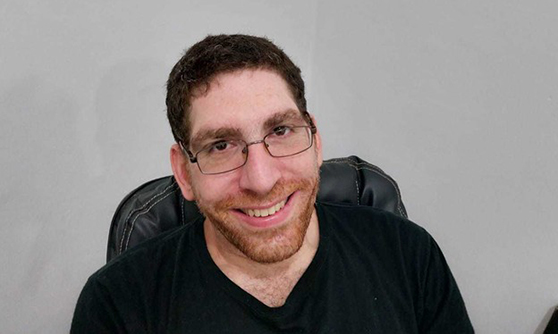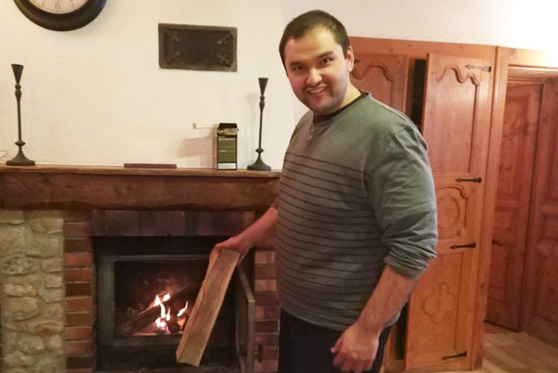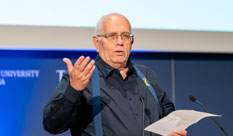More:
News & Stories
Students projects in the service of digital medicine
Students of engineering and applied mathematics dive in to the world of research and tackle real health issues in the practical world of digital medicine.

Prediction of falls in Parkinson’s patients through analysis of walking and steps
Falls are a significant cause of disability, lost independence and reduced quality of life in people with Parkinson’s disease. Prospective studies show that between 45% and 68% of people with the disease will fall each year with a large proportion (50–86%) falling recurrently.
Ohad Ben-Haim and Dmitry Patashov, graduates of HIT in Electrical Engineering and Applied Mathematics, developed software that helped predict the probability of falls in Parkinson's patients.
Their final project was in collaboration with the Sourasky Medical Center in Tel Aviv . "Using a virtual reality platform, we placed sensors on the legs of Parkinson’s patients which tasked them to walk over hurdles, an action in which they had to either lift their legs up or lengthen their steps in order to avoid these obstacles, " explains Ohad. “We focused on the analysis of these actions, in order to determine how and when the patients failed in their steps – data which could be used as an indicator of falling.”

Ohad Ben-Haim
"When we presented the findings of the study, together with my project partners, the representatives of Sourasky Hospital were very impressed and asked that we present them at a conference of biomedicine in Haifa that month," he says. "We presented our research there and saw dozens of other projects, each of which attempted to solve a different medical problem. Like us, none of the participants had a background specifically in medicine, instead coming from fields like math, computer science or engineering. It was then that I realized that my studies in electric and electronic engineering and applied mathematics provided me with such extensive tools that I was able ‘attack’ problems far beyond my specific scope of study.”
"The academic program at HIT was very practical. I learned a great many techniques during my course of study, particularly as regards machine learning. This repertoire of skills is used on a daily basis as part of my work, which I’m glad to say I found immediately after graduation."
Early detection of thalassemia as a means to prevent hereditary transmission
Thalassemia is a blood disorder caused when the body doesn’t make enough hemoglobin, an important part of red blood cells. The disease causes insufficent oxygen delivery to the other cells of the body which can lead to severe anemia requiring blood transfusions for life.
Alexei Nomzov, a student in Applied Mathematics, developed a model for identifying the disease which had a had a 93-94%, significantly higher that traditional hematology predictors
"I started the project in my sophomore year," he says. ‘I conducted a biomedical study with a very practical goal: to identify whether thalassemia genes could be detected in subjects whose parents had the gene. Due to the hereditary nature of the illness, the parents could potentially pass it on to their children, increasing the chances that they too will get the disease.”
“Parents are often unaware that they are carriers of the disease, even if they are not necessarily sick”, he emphasizes. “It is a serious disease that leaves a severe deformity in the child and survival rates are very low in the first years.”

Alexei Nomzov
The final project was carried out in collaboration with Clalit Health Services. “We identified thalassemia genes in the parents, using the data generated by a mathematical algorithm that we designed. The success rate was staggering - around 93-94%, which is higher than the hematologist's detection ability.’
"Studying at HIT is what led me to the field of biomedical research in industry and academia and enabled me already in my sophomore year to be exposed to real research," notes Alexei. “ One of the leading figures in the hematology industry came, saw the work, and was deeply impressed by my final project. This exposure, to the practical world during my degree studies helped me become acquainted with the use of technological applications in the field of medicine.”
"After graduating, I worked as a research assistant at the Weizmann Institute and then went on to pursue a master's degree in neuroscience, specializing in the rehabilitation of stroke victims", says Alexei. "Today I work as an engineer and algorithm researcher at a high-tech company, and am working diligently to build a device that measures blood pressure continuously and in a non-invasive manner.”
“The skills I acquired during my studies at HIT was evident almost on a daily basis in my work. Thanks to the applied nature of the degree program, I was able to experience first hand the things I encounter now in my daily routine at work. "
Posted: 16/08/2021
- News & Events
New Collaboration with Sheba Medical Center will qualify nurses to work in a digital environment.
Collaboration between HIT Holon Institute of Technology, the teaching authority of the Sheba Medical Center, and the Sheba-BEYOND virtual hospital will allow training nurses in Israel and around the world to work in a digital...



 Additional programs
Additional programs
